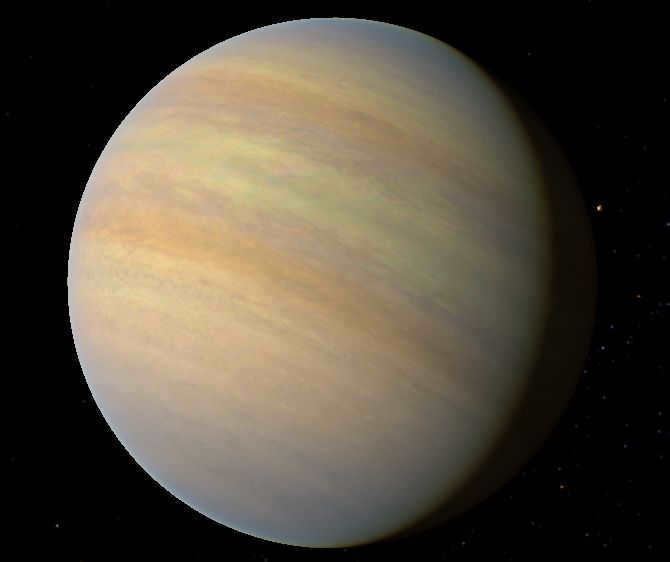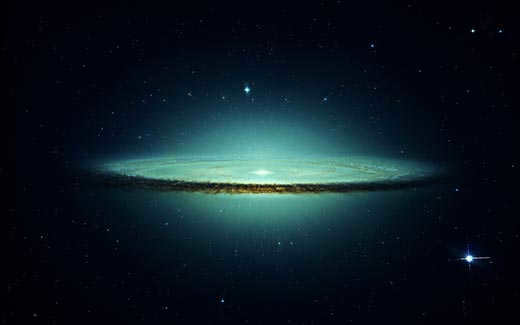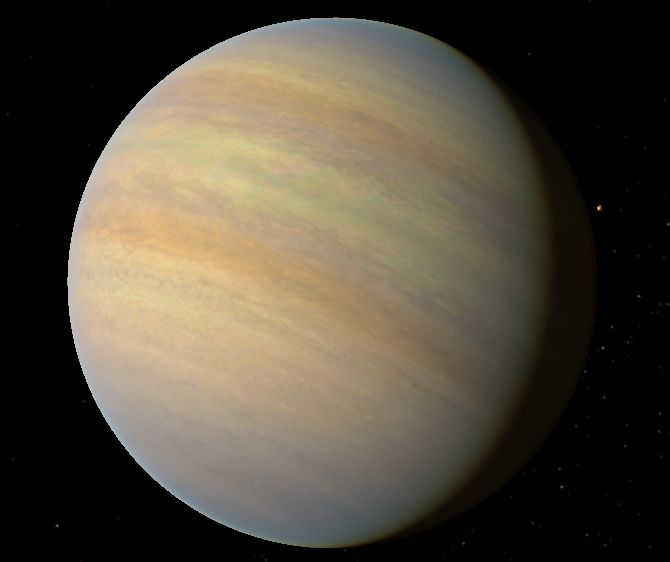
A light-year is not a measure of time, contrary to popular belief. Rather, it is a measurement of distance employed in the field of astronomy. Specifically, a light-year represents the distance that light travels within the span of one year.
In the realm of astronomy and science fiction literature, the concept of a light-year is often utilized to ascertain the vastness of the solar system. However, for more precise mathematical calculations, scientists rely on another unit of measurement known as the parsec as a foundational unit.


How do we measure a light year?
The concept of the light year emerged in the field of astronomy as scientists sought to understand the vastness of space and develop parameters that could accurately represent its scale. It was first introduced a few years after the successful measurement of the distance between the Sun and the star 61 Swan in 1838.
Originally, a light year was defined as the distance traveled by light in one tropical year, encompassing the entire cycle of seasons. However, since 1984, the Julian year (365.25 days) has been used as the standard.
Numerical values
- 9.46 petameters (approximately 9,460,730,472,580,800 meters)
- 63,241,077 Astronomical units (AU.)
- 0.306601 parsecs
Related units
The following units are not commonly used, usually only in popular publications:
- 1 light second = 299,792.458 kilometers (exact)
- 1 minute of light ≈ 18 million km
- 1 light hour ≈ 1,079 million km
- 1 day of light ≈ 26 billion km
- 1 light week ≈ 181 billion km
- 1 light month ≈ 790 billion km
Light-year and other distances
Given the vastness of the distances involved, it would be impractical and inconvenient to measure them using conventional units. As a result, a special unit of measurement was introduced – the light-year. This represents the distance traveled by light in one Julian year, which is equivalent to 365.25 days. If we take into account that there are 86400 seconds in a day, we can calculate that light travels slightly over 9.4 kilometers in one year. Although this may seem like an enormous distance, it is worth noting that the nearest star to Earth, Proxima Centauri, is located 4.2 light-years away, and the diameter of the Milky Way galaxy is over 100,000 light-years. This means that the visual observations we make today actually depict images that existed hundreds of thousands of years ago.
It takes approximately one second for a beam of light to travel from Earth to the Moon, while sunlight needs over eight minutes to reach our planet.
In the field of professional astrophysics, the utilization of a light year is infrequent. Instead, scientists commonly work with measurements like the parsec and the astronomical unit. A parsec refers to the distance from a hypothetical point where the radius of Earth’s orbit is observed at an angle of one arc second (1/3600 of a degree). The mean orbital radius, which is the distance from Earth to the Sun, is referred to as an astronomical unit. A parsec is roughly equivalent to three light years or 30.8 trillion kilometers. An astronomical unit is approximately 149.6 million kilometers.
Measuring vast expanses of open space can be a challenging task when using traditional units such as kilometers or miles. In an attempt to address this issue, scientists are exploring alternative units of measurement for great distances. One commonly heard term in the realm of science fiction is the light-year, but not everyone understands its true meaning. Some individuals fail to see how it differs from ordinary earthly measurements.
A widely used tool for measuring distances in the cosmos is the light-year. This unit is determined by:
An important prerequisite for utilizing this calculation is that light is unaffected by gravitational fields. This requirement is met in the vacuum of space, where the speed of electromagnetic radiation remains constant.
In the 17th century, scientists endeavored to determine the speed of light.
… In the past, astronomers held the belief that light traveled through space instantaneously. However, Galileo Galilei questioned this assumption and set out to determine the time it takes for a beam of light to cover a specific distance, namely eight kilometers. Unfortunately, his experiments did not yield successful results. Another scientist, O. Remer, also attempted to study this phenomenon but faced similar difficulties. He observed a discrepancy in the timing of eclipses of satellites of other planets based on the Earth’s position. When the Earth is further away from another celestial body, it takes longer for the light rays to reach the Earth’s surface. Despite his efforts, Remer was unable to calculate the speed of these rays.
During the 18th century, an Englishman named James Bradley made the first rough estimation of the speed of light. As an astronomer, he determined that it was approximately 301,000 km/s. Later on, in the following century, scientists were able to calculate the precise value of the speed of light using Maxwell’s theory of electromagnetism. This calculation took into consideration the refractive indices of the latest laser technology. The result of their research was a speed of light of 299,792 kilometers and 458 meters per second. This accurate measurement proved to be crucial in establishing a convenient unit of measurement for the vastness of outer space.
How is the speed of light measured?
In order to determine a light year, scientists initially had to establish the speed of light. In the past, astronomers believed that light traveled instantaneously through space. However, this assumption began to be questioned in the 17th century.
Galileo Galilei was one of the first to attempt calculations in this area. He set out to calculate the amount of time it would take for light to travel a distance of 8 km. Unfortunately, his research was not successful. It was James Bradley who was able to come up with an approximate value of 1728, ultimately determining the speed of light to be around 301 thousand km/s.
What is the velocity of light?

What is the velocity of light?
Despite Bradley’s relatively accurate calculation, it was only in the 20th century that the precise speed was determined. Modern laser technology was employed for this purpose. Advanced equipment allowed for the accurate calculation of the refractive index of light rays. Consequently, the value was determined to be 299,792,458 kilometers per second.
Interestingly, these figures are still utilized by astronomers today. Furthermore, these calculations enabled the accurate determination of the time it takes for light rays to orbit the Earth without being influenced by gravitational fields.
Despite the incomparability of the speed of light to Earth distances, it is utilized in calculations because people are accustomed to thinking in terms that are familiar to them.
What is the reason for using light years?
If astronomers were to measure distances to other stars, nebulae, and galaxies in kilometers, the resulting values would be astronomical, with an excessive number of zeros. While this approach may still be feasible for measuring distances within the solar system, where everything is measured in millions and billions of kilometers, it becomes impractical for interstellar distances. It would be akin to measuring the distance between cities in millimeters.
A light year is an incredibly vast unit of measurement. To put it into perspective, the distance to the nearest star is over 4 light years away, and for some stars, it can be hundreds or even thousands of light years. For instance, the Orion Nebula is located a whopping 1,300 light years from Earth, while the center of our Galaxy is a staggering 26,000 light years away. The diameter of our Galaxy spans an immense 100,000 light years. To give you an idea, the distance to the Orion Nebula in kilometers is a mind-boggling 12,651,000,000,000,000,000,000,000,000,000,000,000,000 kilometers. Light years truly provide a practical means of measurement.
However, it’s important to note that light years are mainly useful for measuring distances within our own galaxy. While these intragalactic distances are immense, they still pale in comparison to the vast intergalactic distances. For example, the distance to our nearest neighboring galaxy, Andromeda, is a staggering 2.5 million light years, and beyond that, the distances are measured in billions of light years.
On the flip side, the concept of a light-year enables us to peer into the past. Therefore, when we observe the Andromeda galaxy situated 2.5 million light-years away, we perceive it as it appeared 2.5 million years ago, rather than its current state. In essence, we have only just intercepted the light that this galaxy emitted 2.5 million years ago. A star positioned 1,000 light-years away may undergo an explosion in the present moment, but the light from this event will not reach Earth until 1,000 years in the future. For an entire millennium, we will continue to witness the star as if it still exists.
Nevertheless, our ability to look beyond 13.8 billion light-years is limited. This marks the age of the universe, and any object located at that distance would be extremely ancient.
Examples of distances measured in light years
Using the ability to calculate the speed of light, astronomers have been able to determine the distance in light years to various celestial objects. For instance, the distance from our planet to the Moon is approximately 1.3 light seconds. Proxima Centauri, the closest star to our Solar System, is located about 4.2 light years away. The Andromeda Nebula, a neighboring galaxy, is situated at a distance of roughly 2.5 million light years. Rays of light cover the immense distance between the Sun and the center of our galaxy in approximately 26 thousand light years, while it takes about 5 light hours for light to travel from the Sun to the farthest planet in our Solar System, Pluto.
In our daily lives, we often find ourselves measuring distances – whether it’s the distance to the nearest grocery store or to a relative’s house in a different city. However, when it comes to vast open spaces, using units like kilometers can be highly impractical. It’s not just about the difficulty of comprehending the enormous values involved, but also the sheer number of digits they contain. Writing down multiple zeros can quickly become a hassle. Take, for instance, the shortest distance between Mars and Earth, which is approximately 55.7 million kilometers. That’s six zeros! And yet, Mars is considered one of our closest celestial neighbors. So, how can we possibly handle the unwieldy numbers that would arise when calculating distances to even the nearest stars? This is where a unit like light-years comes in handy. So, just how much is a light-year? Let’s delve into that now.
The idea of the light year is closely linked to the principles of relativistic physics, which emerged in the early 20th century as the postulates of Newtonian mechanics crumbled, revealing the interconnectedness of space and time. Prior to the introduction of this distance unit, the system primarily relied on larger units of measurement.
The concept of measuring distance was originally quite simple: each subsequent unit was made up of smaller units (centimeters, meters, kilometers, etc.). However, when it came to measuring the distance of a light year, time became a factor. In modern science, it is known that the speed of light in a vacuum is constant and is considered the maximum speed allowed in relativistic physics. These principles formed the basis for the new definition of a light-year, which is the distance that a ray of light travels in one year in Earth’s solar system. In terms of kilometers, a light-year is approximately 9.46 * 10^15 kilometers. It is interesting to note that a photon can travel to the moon’s nearest point in just 1.3 seconds, while it takes about eight minutes to reach the sun. However, the nearest star, Alpha, is already four light years away.
The distance is incredible. In the field of astrophysics, there exists an even more significant unit of space measurement. A light-year is approximately equivalent to one-third of a parsec, surpassing even a unit of interstellar distance.
The variability of the speed of light
Incidentally, it is worth mentioning that photons are capable of traveling at varying speeds in different mediums. We are already acquainted with their velocity in a vacuum. When we refer to a light year as the distance covered by light in a year, we are specifically referring to empty space. However, it is intriguing to observe that under other circumstances, the speed of light can be reduced. For instance, photons experience a slightly slower rate of dispersion in air compared to a vacuum. This discrepancy depends on the specific atmospheric conditions. As a result, the length of a light year would be marginally shorter in a gas-filled environment. Nevertheless, this variation would be negligible and hardly distinguishable from the universally acknowledged measurement.
– The measurement units used in astronomy for objects in the Solar System and nearby objects in the Universe have been accepted. The astronomical unit is approximately 149,598,100 km (+ – ~ 750 km), which is roughly the average distance between the Earth and the Sun. Recent observations have shown a gradual increase in this value at a rate of 15 cm per year, which could be due to the Sun losing mass as a result of the solar wind.
– In meters, the distance that light travels in one year is 9,460,730,472,580,800. It’s worth noting that the starlight we see on a clear night has been traveling to our planet for many centuries, and some of it may not even exist anymore.
– Another unit of measurement used in astronomy is the parsec, which is also known as the “one-second angle parallax.” It represents the distance at which the average radius of the Earth’s orbit, when viewed from a perpendicular angle, appears to be one second of arc. In simpler terms, one parsec is equivalent to 3.26 light-years.
It is worth mentioning that the concept of light-year is commonly used in popular science and science fiction literature, while parsecs are typically reserved for professional work and research.
(The Hubble telescope captured an image of the galaxy UDFj-39546284, which is located 13.3 billion light-years away from Earth, appearing as a red dot.
Alpha Centauri, the nearest star to Earth, is located 4.37 light-years away. However, the most distant galaxy from Earth (as of December 2012) is a staggering 13.3 billion light-years away! This means that humanity won’t know about the extinction of the sun in the same galaxy, known as UDFj-39546284, for a long time.
Public access to information about our closest space environment is increasing: regular users now have the ability to calculate the distance to nearby planets and the time it would take to travel to them without even leaving their homes. If you are curious about the distance between Mars and the Sun, it is worth getting acquainted with the fundamentals of measuring cosmic distances.
Scale
The relationship between light years and Earth years
In our daily lives, we often find ourselves measuring distances: from home to work, to the nearest store, or even to another city. Through these comparisons, we gain a better understanding of the differences between various quantities. When it comes to the concepts of light years and Earth years, many people perceive them as similar, if not identical. This leads to a desire to compare them directly. However, it is important to clarify what we mean by an Earth year. One way to define it is as the distance traveled by our planet in 365 days. Using this definition, a light year would be equivalent to 63,000 Earth years.
If we consider the Earth year as a unit of time and light as a unit of distance, it becomes clear that comparing these values is nonsensical. In this case, the question remains unanswered.
Conversion of 1 light year to kilometers
To determine the distance in kilometers of 1 light year, we first need to ascertain the number of hours in a year. A day consists of 24 hours, and a year comprises 365.25 days (with a leap year occurring every four years). Consequently, a year encompasses 24 × 365.25 = 8766 hours. (Technically, the figure is slightly lower at 8760 hours, as this is an approximation of the number of days in a year.)
Hence, to establish the equivalent distance of 1 light year in kilometers, we must multiply the speed of light in km/h by the number of hours in a year. The result is 9461 billion kilometers. Consequently, 1 light year is equivalent to 9.46 trillion kilometers!
These calculations yield some astronomically large numbers!
If the distance between your house and the store were that immense, and you were moving at a normal speed of 3 km/h, you would spend approximately 360 million years circumnavigating it… That is an incredibly lengthy period of time, isn’t it?
Driving is the preferable mode of transportation. If a car travels at a speed of 100 km/h, it would take anywhere from 10 million to 800 thousand years to cover a distance of one light year. However, this is not a feasible option. Therefore, we need to consider using an airplane! On average, a passenger airplane can cover a light year in a comparatively shorter time of “only” 1 million years.
Alternatively, we could think about using a rocket. Astronauts travel around the Earth at a speed of approximately 8 km/s or 28,800 km/h. Even at this high velocity, it would still require 37,500 years to reach the store.
What is the distance from the Sun to Earth in light years?
Now, let’s tackle the opposite problem: determining the distance from the Sun to Earth in terms of light years. To accomplish this, we need to divide the distance from the Sun to Earth, which is measured in kilometers, by the length of a light year. The average distance from the Sun (also known as an astronomical unit) is 150 million kilometers, while a light year is equivalent to 9.46 trillion kilometers. By dividing the former by the latter, we arrive at a value of 0.0000016.
Therefore, the distance from the Sun to Earth is approximately 0.0000016 light years. Alternatively, it can be expressed as 8 light minutes.
The Sun is in much closer proximity to the Moon, with an average distance of 384,000 kilometers or just slightly over one second of light. Now, let’s calculate how many light years that is. By dividing 384,000 km by the length of a light year in km (which remains the same at 9.46 trillion km), we arrive at the figure of 0.000000041 light years. (Of course, I could be mistaken, so feel free to verify the math yourself.)
Admittedly, expressing the distance to the Moon in light years seems rather nonsensical. However, this does raise an interesting question:
Why is it of such great significance?
The precise measurement of the speed of light has enabled astronomers to accurately calculate the distances between planets, stars, and galaxies. This discovery has revealed that the light emitted by a star does not reach Earth instantaneously. When we gaze at celestial objects in the night sky, we are actually observing events from the past. For example, the explosion of a faraway planet that occurred hundreds of years ago would only now be observable to scientists.
When it comes to measurements in our Universe, utilizing this particular unit is quite convenient. It’s not as usual to employ hours, weeks, or even months. If one were to calculate the distance to far-off celestial bodies using these units, the resulting number would be absolutely massive. This would make it rather challenging and impractical to use such values for mathematical computations. Scientists have taken this into consideration and, for astronomical purposes involving vast distances, they have adopted a different unit of measurement known as the parsec. This alternative unit is more suitable for intricate mathematical calculations. Interestingly, one light-year is equivalent to approximately one-third of a parsec.
What is the equivalent of a light year?
If we consider that the speed of light is 299,792,458 meters per second, it can be calculated that light travels 17,987,547,480 meters per minute. This information is widely used by astrophysicists to measure distances within planetary systems.
When studying celestial bodies on a universal scale, it is more convenient to use the light-year as a unit of measurement. This is equivalent to 9.460 trillion kilometers or 0.306 parsecs. Interestingly, observing cosmic bodies is the only opportunity for humans to witness the past with their own eyes.
It takes many years for the light emitted by a distant star to reach Earth. Therefore, when observing cosmic objects, we see them not as they currently exist, but as they appeared at the moment the light was emitted.
What is the distance measured in light years?
In the span of just one second, photons of light are able to travel a staggering 300,000 kilometers. A light year, on the other hand, represents the distance that light can traverse within the course of 12 months. This distance can be expressed in kilometers as a mind-boggling 9,460,730,472,580.8 km or 9.46 x 10^15 km. Utilizing the term “light years” is undoubtedly more convenient than dealing with such astronomical figures. However, it is important to note that these values are merely approximations. For instance, 1 second of light equates to approximately 300 thousand kilometers, while 1 light minute is roughly equal to 18 million kilometers. Similarly, 1 light hour corresponds to around 1080 million kilometers, and 1 light day is approximately 26 quadrillion kilometers. Moving further, 1 light week would be about 181 quadrillion kilometers, and finally, 1 light month would measure a staggering 790 septillion kilometers.
Imagine a spacecraft zooming through space at the impressive speed of the third cosmic velocity, which is approximately 16.8 kilometers per second. In the span of 18,000 years, this spacecraft would cover a remarkable distance of one light year. Now, let’s consider the vast expanse of our Milky Way galaxy, which spans a diameter of around 100,000 light years. If our spacecraft were to embark on a journey from our galaxy, it would take nearly 2 billion years to venture beyond its boundaries! It’s truly mind-boggling.
Turning our attention to the nearest star to our Sun, known as Proxima Centauri, we find that it is located approximately four light years away. When we think about this distance in terms of kilometers, the number becomes incredibly large. However, when we compare the separation between Proxima Centauri and the closest galaxy, the Andromeda Nebula, we realize that the star is actually quite close. The Andromeda Nebula is a staggering two and a half million light years away from the Milky Way. If our spacecraft were to set off on a journey towards this distant galaxy, it would take a whopping 35 billion years to reach its destination.
What other purposes do light years serve?
Utilizing light years allows us to gain insight into potential locations for intelligent civilizations within the universe. This is how scientists can determine the most viable areas to send radio signals and which areas are not worth pursuing. Here’s how it works: the speed of light is equivalent to the speed of a radio signal, and it turns out that it’s completely futile to transmit messages to places that would take thousands or even billions of years to reach. Based on the signals transmitted, it’s logical to search for “neighbors” that would at least last for the entirety of human life.
Numerical values of the light-year measurement
- In meters – 9,460,730,472,580,800 meters, or 9.46 petameters.
- In astronomical units – 63,241.1 a.u. AE This is the average distance between the Sun and Earth.
- In parsecs, it is Rs. 0.306601.
It is customary in popular publications to express the distance traveled by a photon of light per unit of time using specific units. The speed of light is equal to 299,792.458 kilometers per second.
By knowing the distance between the Earth and the Moon, we can calculate that it takes 1.3 seconds for a beam of light to reach the surface of the Moon. And the distance of one astronomical unit is equivalent to 500 seconds.
As humanity ventured into the exploration of their planet, the need for diverse units of measurement arose to accurately assess distances and segments. Initially, length measurements were prone to inaccuracy due to the various ways in which different cultures measured. It wasn’t until 1791 that French scientists introduced a measure that continues to be utilized today – the meter (derived from the Greek word for “measure”). However, at the turn of the twentieth century, mankind began to direct their attention towards the study of outer space. Given the vast distances within the Universe, the existing metric system proved inadequate for gauging such immense spans. While one can feasibly measure the distance from our planet to the Moon or Mars in kilometers, attempts to measure the distance to other planets or even stars would yield an astonishing amount of zeros. Thus, scientists resolved to introduce the concept of “light years”.
What is the purpose of light years?
The reason for light years is quite straightforward: it allows us to measure distances beyond our solar system!
- Proxima Centauri, the star closest to the Sun, is located 4.2 light-years away. This means that it takes light 4.2 years to travel from the Sun to Proxima Centauri.
- Many of the stars visible in the night sky are tens or hundreds of light years away!
- Deneb, a star in the summer triangle, is situated 2,500 light-years away from us.
- The center of our galaxy, known as the Milky Way, is located 30,000 light years away.
- The Milky Way has a diameter of 100,000 light years.
- The Andromeda Nebula, the nearest large spiral galaxy, is positioned 2.5 million light-years away.
- The distance from Earth to the center of a large cluster of galaxies in the Virgo constellation is 65 million light-years.
- The closest quasars are separated by a distance of 3 billion light years.
- Ultimately, the farthest reaches of the observable Universe are nearly 14 billion light years away.
Why not attempt to convert those distances into kilometers? I’m not interested. And neither are astronomers, apparently.
PS. Well, I guess you can’t exactly take a road trip across these vast expanses…..

September 1st holds a special significance for students, parents, and teachers alike. Knowledge Day is typically celebrated with a festive assembly and a class period dedicated to welcoming the new first graders. This year, a record-breaking number of students, approximately 110,000 children, will be entering schools. According to predictions, the number of first graders is expected to reach 120,000 by the start of the school year. In the Moscow region, the second phase of enrollment will continue until September 5th. To learn more about how Russia will be celebrating the first day of school, check out the article from “Izvestia”.
September 1, 2023: Determining the Weekday and Class Schedule
The start of the autumn season in 2023 will be marked by September 1, which falls on a Friday. While many schools may not alter their regular class schedule to accommodate this, it is advised to contact the specific school your child attends for detailed information regarding their lesson plans.

In the upcoming 2023/24 academic year, primary school students across all educational institutions will have a maximum of five school days per week. The specific schedule for grades 2-11 will be determined by the school administration, considering the unique requirements of the curriculum. Nevertheless, the workload expectations set by the standard guidelines will remain consistent, regardless of whether the school week consists of five or six days.

What time does the lineup start on September 1, 2023?
Knowledge Day is a significant occasion for both first-graders and graduates. It marks the beginning and end of their school years. In 2023, the ceremonial event will be held in the traditional manner. The exact time of the lineup may vary depending on the school, but typically it starts in the morning, between 8:00 and 9:30.

Commencement ceremonies at specialized educational institutions, such as military schools, gymnasiums, and lyceums, typically commence with a grand assembly. The start of the new academic year is accompanied by the resounding rendition of the Russian national anthem performed by a military band. Following the festivities, the commanding officers deliver an inspirational address. As a tribute to the Day of Knowledge, cadets often showcase a remarkable performance, showcasing their athletic prowess and demonstrating acrobatic feats and power sports.
Weather forecast for September 1, 2023
September 1 weather forecast in Moscow and the Moscow region predicts warm and sunny conditions. The temperature is set to reach 19 degrees Celsius. Conversely, St. Petersburg is expected to experience light rain with a maximum temperature of 19 degrees Celsius. Vladivostok can look forward to clear days throughout September. In Novosibirsk, the maximum temperature on September 1 will be 18 degrees Celsius.
The celebration is commemorated by hoisting the flag and singing the national anthem. Afterward, the students, particularly the first-graders, and their parents, all dressed up, proceed to the auditorium to listen to the teachers’ opening remarks. The first-graders actively participate in educational activities and competitive games that aim to foster camaraderie among the students and familiarize them with their peers and the school environment.

Typically, parents present teachers with sweet gifts and flowers. Moreover, nowadays the parents’ association purchases a group present on behalf of the entire class. The festivities conclude with a class assembly, during which the students are briefed on the upcoming school year.

Topics for the September 1, 2023 Class Hour
The mood of students for acquiring knowledge depends on the first lesson. During the class hour, the solemn ruler will discuss current issues in the country and worldwide. This is done to ensure that students feel connected to the events happening around them. Uniting the class and fostering team spirit is one of the main objectives of the first lesson. The teacher should establish a positive mindset and explain the fundamental rules of student behavior at school.

The primary focus of the lesson on September 1, 2023 will be promoting global harmony. Educators will curate a special presentation for incoming students titled “The Lesson of Peace”. The first-year students will delve into the concept of “peace”, explore the symbols of the Russian Federation, and examine the primary catalysts for conflicts in various nations. Through the use of multimedia presentations, slides, and video materials, the instructor will emphasize the significance of preserving tranquility and showcase strategies for conflict resolution. The most engaged pupils will recite poems related to the subject matter.
The holiday of September 1 is commemorated in numerous higher educational establishments across the nation. On this occasion, first-year students participate in an assembly. The university president and faculty deans deliver a formal address. Typically, they share insights into the institution’s customs and traditions, as well as outline plans for the upcoming year. In certain universities, the official distribution of student identification cards occurs on September 1. Senior students put together musical acts and creative performances.
School holidays in Russia in 2023/24
Russia has two educational systems – quarters and trimesters. The quarter system was adopted during the Soviet Union era. Students in Russian schools have vacations in the autumn, winter, spring, and summer. The second educational system is modular or trimester-based. The academic year is divided into equal parts: five weeks of studying followed by one week of vacation.






